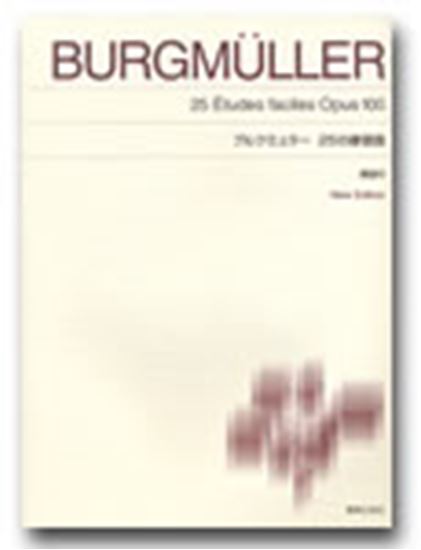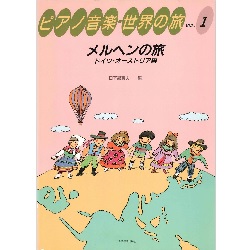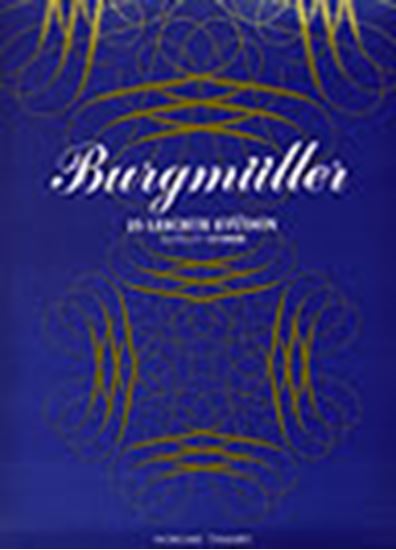Burgmüller, Johann Friedrich Franz : 25 Etudes faciles et progressives, conposées et doigtées expressément pour l'étendue des petites mains La chevaleresque Op.100-25
Work Overview
Genre:etude
Total Playing Time:2 min 00 sec
Copyright:Public Domain
Additional Notes:表記ゆれの例:乗馬
Commentary (3)
Author : Sato, Takashi
Last Updated: January 31, 2022
[Open]
Author : Sato, Takashi
The reason why the final piece is particularly popular might partly lie in its title (some editions call it "The Young Lady's Ride"). However, the original title, La chevaleresque, actually features neither a lady nor a young lady, and originally means something like "chivalrous" or "knightly." While it certainly depicts riding a horse, the word "lady" seems to have been applied to evoke an elegant musical character rather than a galloping one. In any case, it is a splendid piece, fitting as a grand summary and conclusion to the collection. For the final chord, the author suggests playing the bass an octave lower.
Performance Points (Original Tempo ♩=152)
The music progresses in 4-bar and 8-bar units, forming a block-like structure. Express the changes in each scene. In bar 1, emphasizing the weight difference between strong and weak beats will clearly bring out the riding rhythm. In bar 2, differentiate the rhythm between the short appoggiatura and the sixteenth notes, and from bar 9 onwards, articulate the dynamic changes. In bar 17, play the right hand legato, and use the left hand's first finger softly from the wrist. In the coda, especially from the triplet passage in bar 37, avoid sudden tempo changes. In bars 42 and 43, be careful not to let the beginning of the left-hand scale deviate from the right hand.
(From To-on Edition "Burgmüller 25 Etudes" (NS70))
Author : Ooi, Kazurou
Last Updated: March 12, 2018
[Open]
Author : Ooi, Kazurou
25. The Horsewoman
For children, playing "The Horsewoman" is often a dream or an aspiration. However, this piece is not easily played. Learners who cannot master the scales in the Coda from measure 40 onwards will face disastrous results. First, one must somehow be able to play measures 40-43. This may require diligent practice, such as Hanon exercises, to ensure the left hand does not lag behind. Instructors should first assess whether this Coda is within the student's capability before assigning the piece.
Typical Problems
Next, we will address typical problems that may arise. In measure 1, the staccato notes must be played very short. If they sound heavy, it will sound as if a fatigued person is playing. Next, consider the issue in measure 2, beats 1-2. Learners tend to apply force to each of the five right-hand notes written here: E, D, C#, D, B. The initial E is a grace note, so it should be played almost simultaneously with the following D, in "one motion." Now, regarding the next C#, consider it a grace note for the upcoming D, and play it almost simultaneously, in one motion. At that time, absolutely do not apply force to C#; only apply a slight accent to D. Similarly, consider the next B as a grace note for the subsequent A, and play it almost simultaneously, in one motion.
Consequently, the only places where accents should be applied are the D on beat 1, the D on beat 2, and the A on beat 3. Play the other notes without any force, as if they were grace notes. This will completely transform the performance. From measure 2 onwards, if the same pattern appears, perform it using the same method.
Other Notes
- The crescendo in measure 7 should continue until the C, the final note on beat 3 of measure 8, which is the target note.
- In measure 9, ensure the left and right hand triplets do not become misaligned. Play this section forte, and from beat 4 onwards, make all of measure 10 piano.
- Measure 20 is about resonance (sustain). Not much force is required.
- Play the triplets in measures 37-38 in tempo, without slowing down. Of course, the same applies to the sixteenth notes from measure 40 onwards.
Author : Iida, Arisa
Last Updated: March 15, 2018
[Open]
Author : Iida, Arisa
Musical example provided by: Ongaku no Tomo Sha
Arrangements & Related Works(3)
PTNA & Partner Channel Videos(25items) View More
Sheet MusicView More
Scores List (28)

(株)東音企画(バスティン)

(株)東音企画(バスティン)

(株)東音企画(バスティン)

(株)全音楽譜出版社

(株)ドレミ楽譜出版社

(株)音楽之友社

KMP(ケイ・エム・ピー) ケイエムピー

(株)ドレミ楽譜出版社

ハンナ(ショパン)

(株)ヤマハミュージックエンタテインメントホールディングス

デプロMP

(株)ドレミ楽譜出版社

(株)全音楽譜出版社

(株)ドレミ楽譜出版社

カワイ出版

カワイ出版

デプロMP

(株)ヤマハミュージックエンタテインメントホールディングス

デプロMP

(株)音楽之友社

(株)共同音楽出版社

(株)全音楽譜出版社

(株)ヤマハミュージックエンタテインメントホールディングス

(株)音楽之友社

(株)ヤマハミュージックエンタテインメントホールディングス

Neil A. Kjos Music Company





















